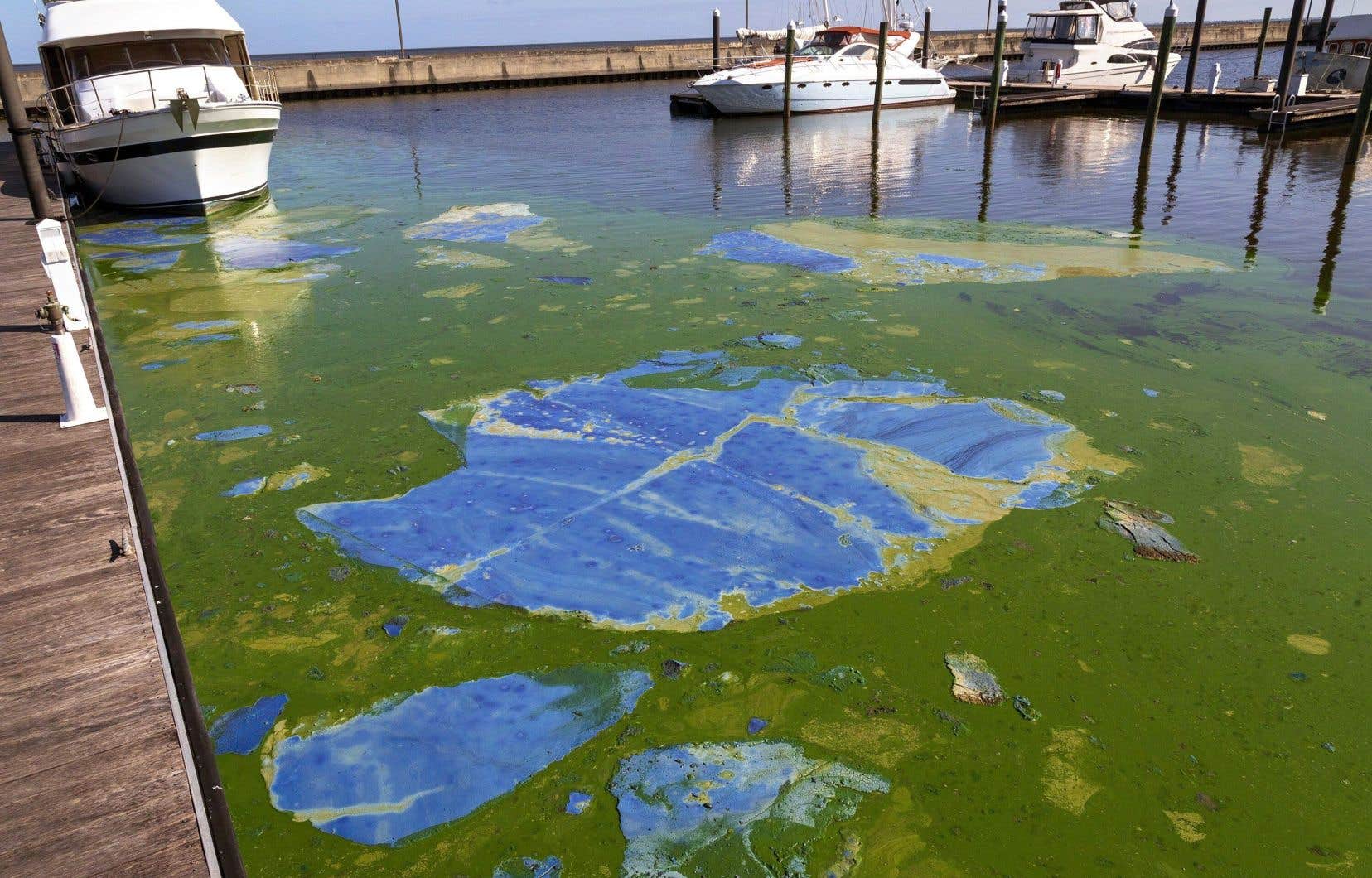High temperatures often rhyme with the desire to swim… and proliferation of algae. To rid the lakes of blue flowers, a professor from Concordia University has created a filtration system that works without chemicals.
Blue-green algae, or cyanobacteria, occur naturally in lakes, but they can thrive in warm, shallow water, depending on wind and current. They thus form what are called algal blooms, which give the lake a greenish color.
Some algae produce toxins, which can cause vomiting, irritation or stomach aches. Covering the surface of the water, they also block the passage of light, which is harmful to the ecosystem, explains the professor in the Department of Civil Engineering, Building and Environment at Concordia University Catherine Mulligan.
In addition to the risk to humans and the biome, algae are also visual pests, which can depreciate the value of surrounding properties by thousands of dollars.
Research to get rid of it is therefore not new.
An autonomous system
In the summer of 2019 and 2020, Mme Mulligan and his team installed a floating filter on the shallow Lac Caron in the Laurentians, which has been subject to a swimming restriction notice since 2008 due to the presence of algae, can we read in the study.
Floating on a tire, a pump pumps water from the lake onto a geotextile filter that “catch all the algae and other solids,” says Ms.me Mulligan. Based on “polymers, the filters are durable” and reusable.
The system, which the team would like to make autonomous by installing solar panels to supply the pump with energy, is easily movable. An advantage, since the presence of algae “varies a lot from one year to another”. “We can remove it if we no longer need it. »
The ingenious idea goes back to a sabbatical year in Japan in 2005. “I learned all the information there, and I thought that maybe there was a way to do something in Canada for my back,” recalls the director of the Concordia Institute for Water, Energy and Sustainable Systems.
In 2007, more than 80 Quebec waterways were contaminated by cyanobacteria. A major infestation that marked the beginning of a series of tests for the researcher. And with climate change, the proliferation of algae is likely to be more and more recurrent.
Still at the research stage, the results obtained at Lac Caron are promising, says Ms.me Mulligan. “It reduced production, that’s for sure, because there are fewer nutrients in the water. Now, we must act “faster than the production of algae” and “control the nutrients in the sediments”, she indicates.
The team is also testing its filters in neighboring lakes, to determine which device is suitable for which type of algae, which can be more or less large.
Privatization leaves traces
But researchers sometimes come up against reluctant citizens. “The land around the lakes is private. You have to convince people to put their money into the treatment. »
Privatization is also partly responsible for the presence of algae. “In the 1960s, developers wanted to make the lakes bigger and cut down trees,” says Professor Mulligan, without thinking about the proper “water flow”. And over time, tree stumps and roots covered in water degrade and release nutrients, which can contribute to algae growth.
Eventually, M.me Mulligan believes that the system she has designed will be able to clean other types of bodies of water, and that the principle of filtration can be adapted to allow the elimination of bacteria,E.coliFor example.
This content is produced in collaboration with Concordia University.
